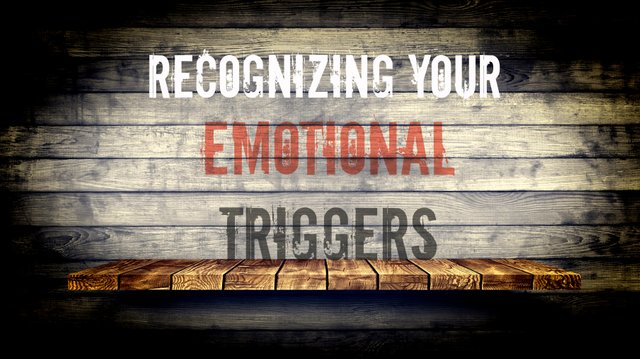We are busy with emotional togetherness.
Closet Projects
We started with the closets which represent the emotional togetherness in our marriages. The different points we are looking at are:
Emotional awareness
Really look
Really listen
Identify
Emotional Analysis
History shapes you.
Needs differ
Know your triggers
Emotional articulation
Respect it
Emotional management
Bury them
Let them explode
Defuse them
In the previous 3 posts, we dealt with the first 4 points on the list above.

https://en.wikipedia.org/wiki/Emotion#/media/File:Emotions
So today we are looking at
Emotional Analysis
Looking inside is difficult and sometimes painful. Emotional awareness often leads to dark and frightening trails that wander through disturbing lands you try hard to suppress. Yet your dark side is a reality. Honesty teaches humility as you discover the truth of the prophet Jeremiah when he said, the heart is deceitful above all things.
As you show courage and integrity in understanding your heart - its secrets and shames, its insecurities and sensitivities, its passions and possibilities - you finally plunge beneath the well-crafted mask of civility and appearance.
Now you can be honest. At times you can be irrational. At times you can be unreasonable, mean and even cruel. This is not a justification, it is simply reality. Do not embrace your dark side, but accept it. As you accept it in yourself, you can accept it in your spouse. And then you are in a position to analyze your emotional history, needs and triggers.
History shapes you.
Your past - good, bad, and ugly - has shaped who you are today.
Examples
Lori was sexually abused by an uncle; today she mistrusts men.
Adam came from a loud and violent home, and now he withdraws whenever his wife gets intense.
Felicity's father left the family for another woman. Twenty years later when her husband glances at an attractive female, Felicity has a panic attack.
History leaves its impact on each individual and every marriage. Share with your spouse your greatest traumas and hurts. Talk about your childhood tears and fears and joys. As you understand each other's history, you begin to understand who you both really are.
Needs differ.
The fears, traumas, and deprivations of childhood leave emotional scars on the adult. These scars surface as emotional needs that scream to be met, and you most often look to your partner for these needs to be met or at least affirmed.
Knowing your spouse's emotional needs is one of the most important tasks you will perform in your marriage. Be a student of your lover.
Notice, study, gather your data, and do your best to meet his or her needs. Be your spouse's greatest cheerleader and comforter.
Everybody's needs are different. Five common relational needs are best described in Gary Chapman's book The Five Love Languages which I also wrote about a few posts back.
These Languages are:
- words of affirmation
- gifts
- physical touch
- acts of service
- quality time
Which of these is your partner's greatest need? How frequently would he or she like you to meet this need? When is the last time you actually get it?

Know your triggers.
Our emotional history leaves needs, but it also leaves triggers. These triggers are a direct link to your emotional history.
Let's look at the following case study.
When Tony lost his high-paying job of eight years, he wasn't worried. he decided to take a few weeks off to relax and reflect on occupational opportunities. But one afternoon Cyndie came home from her work to find Tony unshaven, unbathed and watching cartoons on television. She hit the ceiling.
You lazy, good-for-nothing-bum, she screamed. I work hard all day and you do nothing, absolutely nothing. I thought you loved me. I thought you were going to take care of me, she burst into sobs.
What did just happened?
This couple is financially secure and Tony is a hard worker. So why is Cyndie so upset? Her fear is triggered.
She came from a family where her father had difficulty holding a job and they were frequetly evicted from houses because they could not pay the rent. At times they didn't even had enough to eat. An insecurity and fear was built into Cyndie that she will never forget.
We all have triggers.

It works this way: An external sensory event - a sight, sound, smell, taste or touch - triggers an unpleasant or uncomfortable memory. Then you react with a strong emotion that throws you into the classic fight-or-flight syndrome. So know your triggers and manage your reactions. Some potential triggers are:
- tone of voice
- attitudes
- facial expressions
- lack of respect
- finances
- alcohol
- expectations
- power and control
- sexuality
- perceived abandonment, rejection or neglect.
Be aware of your partner's sensitivities and try not to trigger them. But if you do, don't get defensive. Stay calm. Communicate love and show that you are committed to emotional togetherness.
NEXT POST: Emotional Articulation, name it and respect it.
Thank you for reading, I hope you are learning something about your emotions, feelings and where they come from.
Source: Blueprints for a solid marriage - Dr. Steve Stephens - Tyndale House Publishers
Images: freepik except if stated otherwise.

Yea it a nice series
We need more.
Continue...
Downvoting a post can decrease pending rewards and make it less visible. Common reasons:
Submit
Marriage should be done taking many factors into consideration... Nice post really you have really an interesting article on marriage... Keep streaming @hope777
Downvoting a post can decrease pending rewards and make it less visible. Common reasons:
Submit
as usual dear amazing posts, full of tips especially for the youne people, thanks you . have a sweet time dear.
Downvoting a post can decrease pending rewards and make it less visible. Common reasons:
Submit
love this article, useful for my family! understand our partner is the key!!
Downvoting a post can decrease pending rewards and make it less visible. Common reasons:
Submit